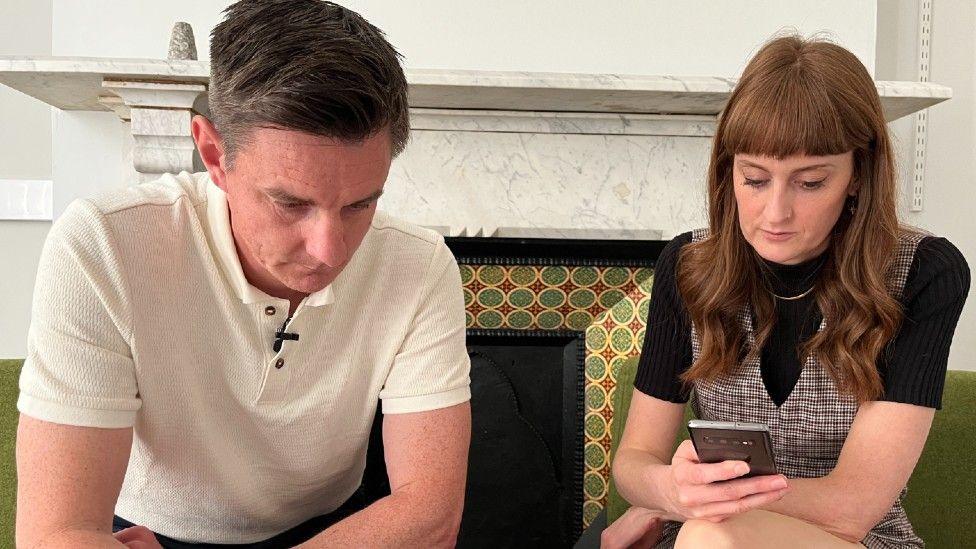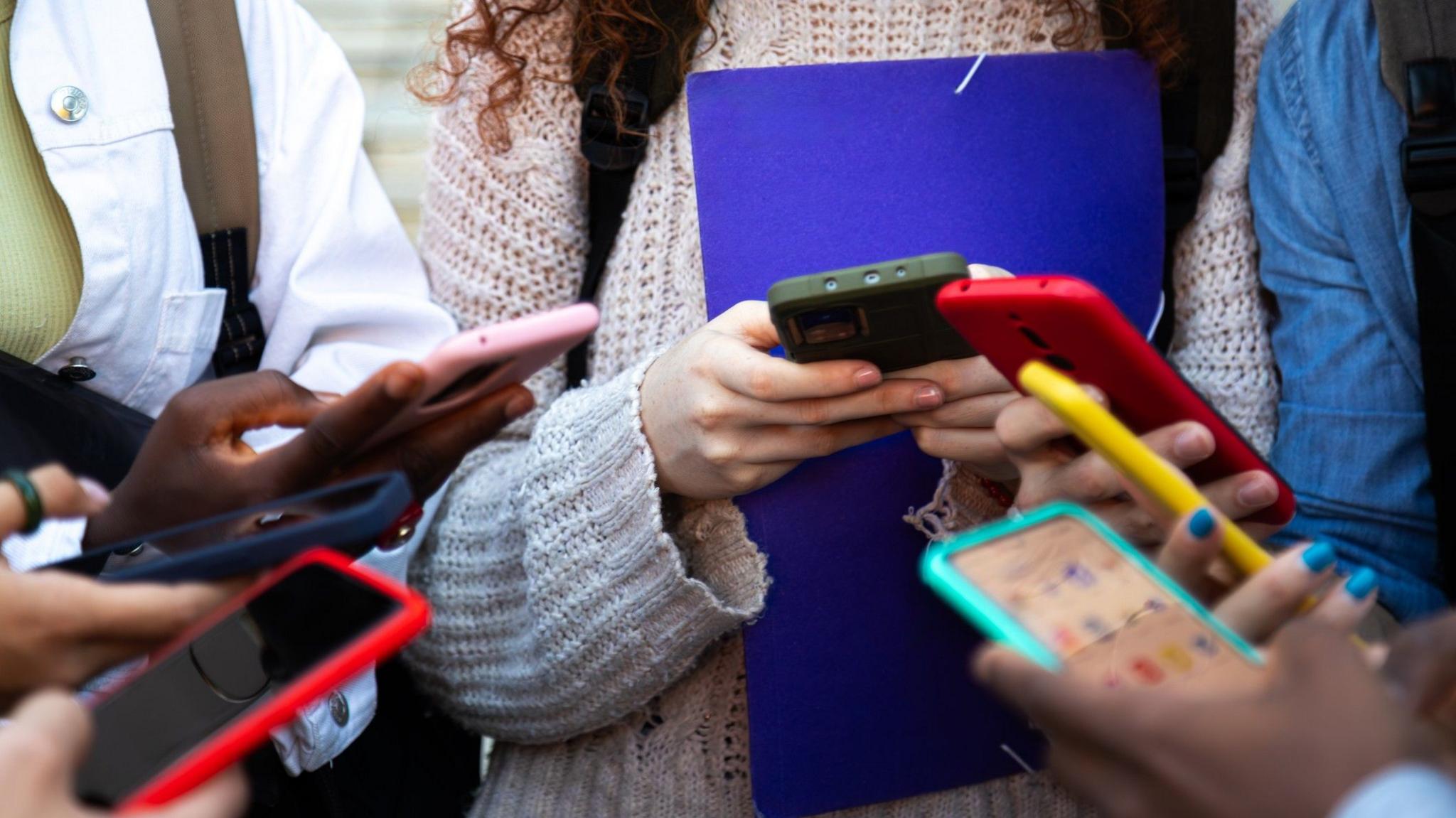Teens still exposed to harmful social media posts

An investigation has found girls and boys were exposed to different types of unsuitable content
- Published
Teenagers are still being exposed to social media content about bullying, suicide and weapons despite new safety rules being introduced, a BBC investigation has found.
Measures came into force in July as part of the Online Safety Act, meaning online and social media companies are now legally responsible for keeping children and young people safe online.
The experiment, in collaboration with BBC Morning Live, used the same profiles and repeated the same exercise as a May investigation.
Online safety expert David Wright CBE said it was "really concerning" but added "in large part it's going to take time" for change to happen.
"It just means that everyone still has to remain vigilant," added Mr Wright, who is CEO of the charity SWGfl and director at the UK Safer Internet Centre.
TikTok and YouTube said they had safety protections in place for young users.

A lot of the content the girls were shown was related to bullying and suicide
In Spring, we set up six fictional social media profiles; three boys and three girls, all aged from 13 to 15.
The boys used TikTok and YouTube and the girls used Instagram and TikTok.
The fake profiles were scrolled for 10 minutes per platform every day for a week.
On TikTok and YouTube the accounts were quickly served concerning posts. One profile was also guided to sexually suggestive content on Instagram.
After the Online Safety Act came into effect, the exercise was repeated, this time in collaboration with BBC's Morning Live programme, sharing our findings with presenter Zara McDermott.
'Worrying' TikTok content
We found there had been some improvements, especially on Instagram, which didn't show any potentially harmful content whatsoever this time.
Instagram's Teen Accounts are now guided by PG-13 movie ratings to help protect under-18s.
However, on TikTok, the girls were still exposed to worrying content, mostly on the profile of 15-year-old Maya, who was repeatedly shown posts about bullying, children who had taken their own lives, people who were terminally ill and stories of women and children who had been violently abused by men.
While one or two posts like this might have gone unnoticed, the volume of them created a depressing sequence during a short 10-minute scroll.
The profile of Sophie, 15, saw some of this material but far less, and Aisha, 13, did not see much of concern.
The boys were not shown any content that was particularly concerning on TikTok, and two of the three YouTube profiles were similarly clear.
However, 15-year-old Harry's YouTube feed showed videos reviewing knives, guns and crossbows. Also - for the first time in our research - the platform displayed footage of animals being shot dead.
As before, the more worrying material came out of the blue and was seemingly at odds with other content in the profile's Youtube Shorts feed, with videos on subjects such a football and gaming coming before and after it.

One of the fictional profiles, a 15-year-old boy, was shown weapons and violence on YouTube
After watching the videos we recorded during our investigation, Emma Motherwell from the children's charity NSPCC said: "More needs to be done."
She added companies should be "integrating that safety by design".
According to TikTok, its teen accounts include more than 50 safety and privacy settings, including content restrictions and a 60-minute screen limit.
It says it bans the vast majority of content classed as harmful to children, restricting mature material to verified over-18s.
YouTube said it takes its responsibility for younger viewers seriously, having expanded its protections for teens, including safeguards on content recommendations.
A spokesperson added: "We generally welcome research on our systems, but it's difficult to draw broad conclusions based on these test accounts, which may not be consistent with the behaviour of real people."
Ms Motherwell advised parents to "create that opportunity for really open, non-judgemental conversations" with their children.
"That opens up the opportunity for them to speak up if they come across content that has had an impact on then," she added.
She also suggested families use parental controls and block certain sites.
'Don't rely on codes'
Mr Wright agreed parents still need to stay across what their children are consuming.
"Just have a voyage with your children through their particular device and the sorts of content, the sorts of apps, the sorts of services they're using.
"Please don't just rely that we've now got these magical codes [Online Safety Act codes of practice] that it's all going to be okay."
He said signs there had been changes, such as with Instagram, were encouraging, "and I would like to think that's a result of the codes being implemented".
But he said the ruling did not mean "everything gets changed on a particular day", adding: "We'll see this kind of shift over time."
Mr Wright said there would always be room for improvement because "this is not a binary thing that we're necessarily dealing with", and that it was now up to Ofcom to continue investigating and enforcing the law.
You can watch the full report on BBC Morning Live on BBC One from 09:30 GMT on Friday.
Get in touch
Tell us which stories we should cover in Bristol
Follow BBC Bristol on Facebook, external, X, external and Instagram, external. Send your story ideas to us on email or via WhatsApp on 0800 313 4630.
- Published18 May

- Published8 June


